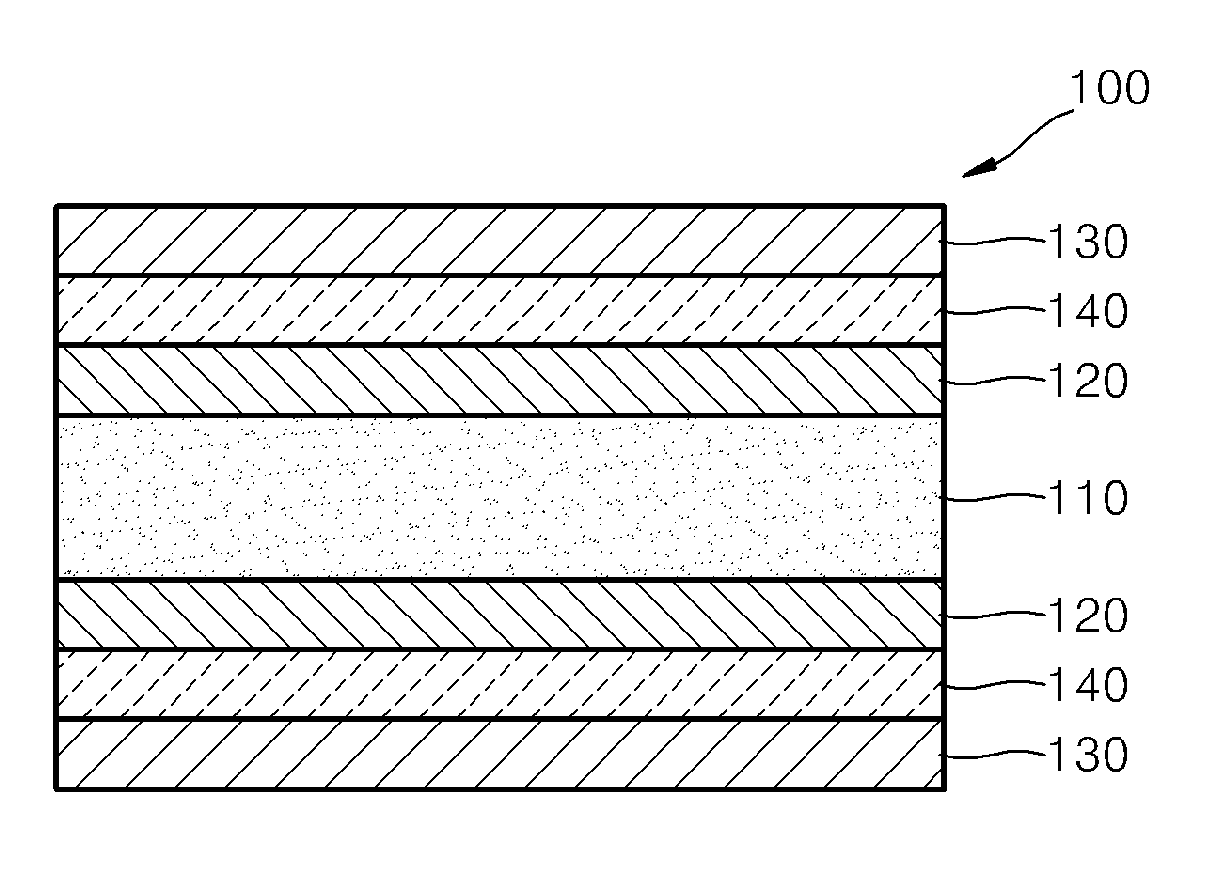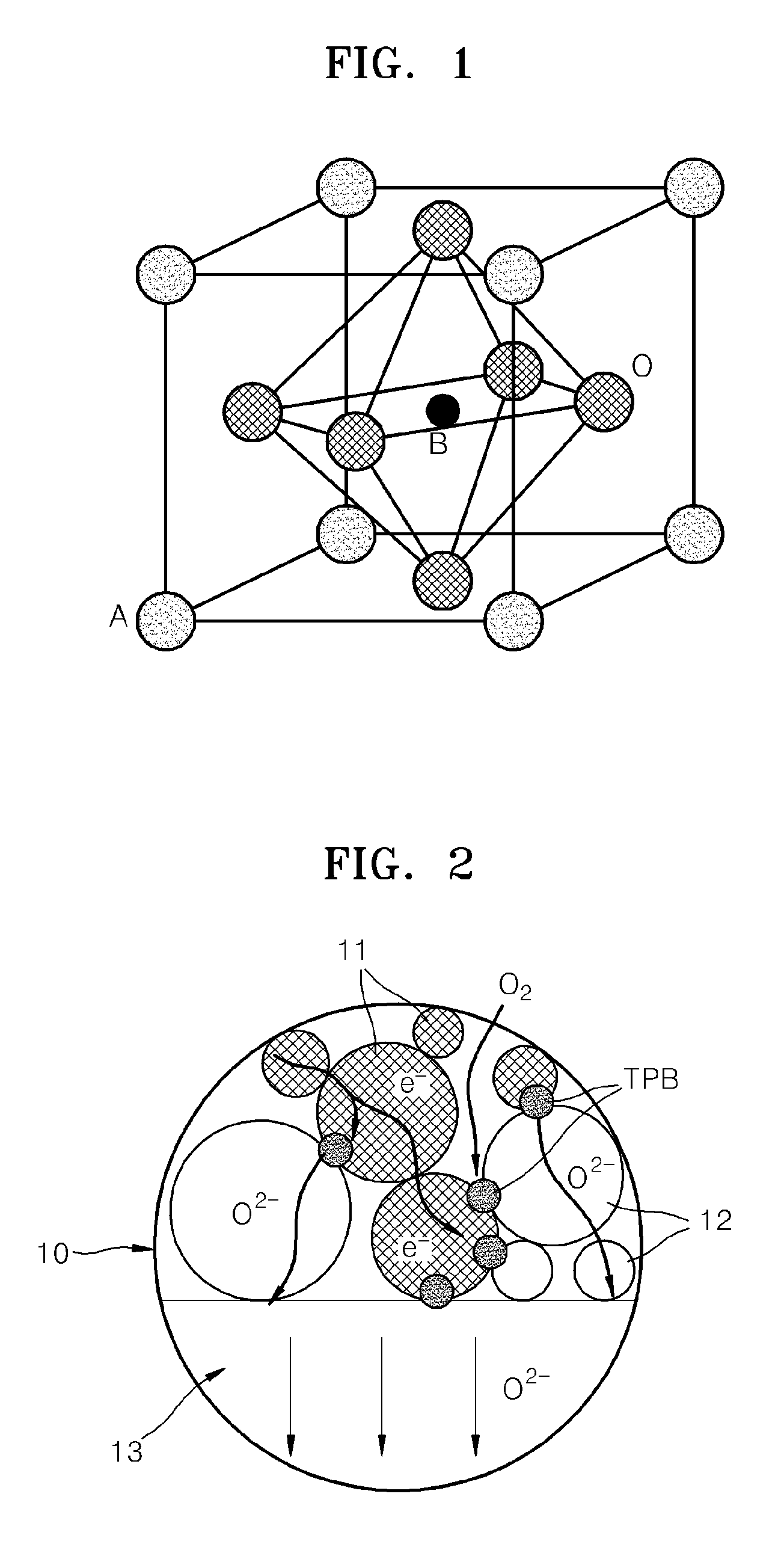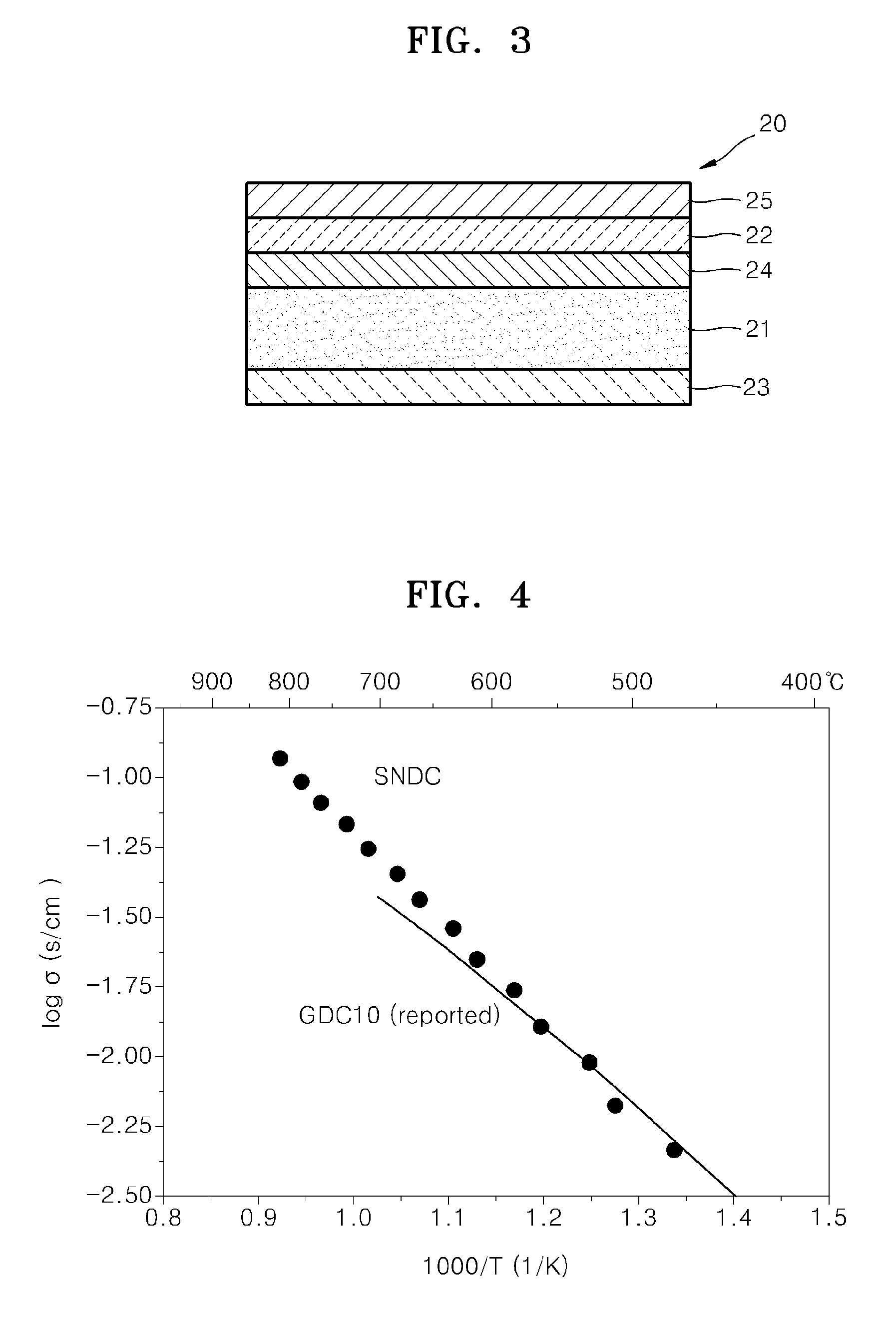Cathode material for a fuel cell, cathode including the cathode material, and a solid oxide fuel cell including the cathode material
a fuel cell and cathode material technology, applied in the direction of cell components, electrochemical generators, cobalt compounds, etc., can solve the problems of high cost of ceramic materials, limited operation time, and limited material durability
- Summary
- Abstract
- Description
- Claims
- Application Information
AI Technical Summary
Benefits of technology
Problems solved by technology
Method used
Image
Examples
preparation example 1
Manufacture of the Cathode (1)
[0112]To manufacture Ce0.8Sm0.15Nd0.05O2, which is an ionically conductive powder and is a Sm, Nd-doped ceria (“SNDC”), first, 19.920 grams (g) of Ce(NO3)3.6H2O, 3.823 g of Sm(NO3)3.6H2O, 1.257 g of Nd(NO3)3.6H2O, and 6.816 g of urea were put into 100 milliliters (ml) of distilled water, and agitated with a bar magnet until they were completely dissolved. Using a hot plate, the resulting solution was heated at about 150° C. for twelve hours to obtain dry powder. By heating the obtained dry powder at about 800° C. for two hours, Ce0.80Sm0.15Nd0.05O2 (“SNDC”) having a fluorite structure was obtained.
[0113]The cathode material was obtained by putting 2.5 g of La0.6Sr0.4Co0.2Fe0.8O3 powder (FCM, hereinafter referred to LSCF) and 2.5 g of SNDC as obtained above into a tungsten vial, adding 10 ml of ethanol into the tungsten vial, mixing them with a high energy miller (Mixer / Mill 8000D, Spex), and then drying the mixture in an oven.
preparation example 2
Manufacture of the Cathode (2)
[0114]A site defective lanthanum strontium cobalt ferrous oxide having the formula La0.55Sr0.4Co0.2Fe0.8O3 powder was manufactured using a urea method. Specifically, 8.457 g of La(NO3)3.6H2O, 3.004 g of Sr(NO3)2, 2.066 g of Co(NO3)3.9H2O, 11.472 g of Fe(NO3)3.9H2O, and 7.288 g of urea (CH4N2O) were put into 100 ml of distilled water, and agitated with a bar magnet until they were completely dissolved. Using a hot plate, the resulting solution was heated at about 150° C. for twelve hours to obtain a dry powder. By heating the obtained dry powder at about 1000° C. for two hours, La0.55Sr0.4Co0.2Fe0.8O3 (“L0.55SCF”) powder having a perovskite structure was obtained.
[0115]The cathode material was obtained by putting 2.5 g of L0.55SCF powder as obtained above and 2.5 g of SNDC powder as obtained in Preparation Example 1 into a tungsten vial, adding 10 ml of ethanol into the tungsten vial, mixing them with a high energy miller (Mixer / Mill 8000D, Spex), and th...
preparation example 3
Manufacture of the Cathode (3)
[0116]The same process as in Preparation Example 2 was used to obtain the cathode material, except that La0.55Sr0.35Co0.2Fe0.8O3 (“L0.55S0.35CF”) as a lanthanide strontium cobalt ferrous oxide was manufactured using a solution obtained by adding 8.586 g of La(NO3)3.6H2O, 2.669 g of Sr(NO3)2, 2.0975 g of Co(NO3)3.9H2O, 11.674 g of Fe(NO3)3.9H2O, and 6.949 g of urea (CH4N2O) into 100 ml of distilled water and then dissolving the mixture.
PUM
| Property | Measurement | Unit |
|---|---|---|
| Melting point | aaaaa | aaaaa |
| Melting point | aaaaa | aaaaa |
| Weight ratio | aaaaa | aaaaa |
Abstract
Description
Claims
Application Information
 Login to View More
Login to View More - R&D
- Intellectual Property
- Life Sciences
- Materials
- Tech Scout
- Unparalleled Data Quality
- Higher Quality Content
- 60% Fewer Hallucinations
Browse by: Latest US Patents, China's latest patents, Technical Efficacy Thesaurus, Application Domain, Technology Topic, Popular Technical Reports.
© 2025 PatSnap. All rights reserved.Legal|Privacy policy|Modern Slavery Act Transparency Statement|Sitemap|About US| Contact US: help@patsnap.com



